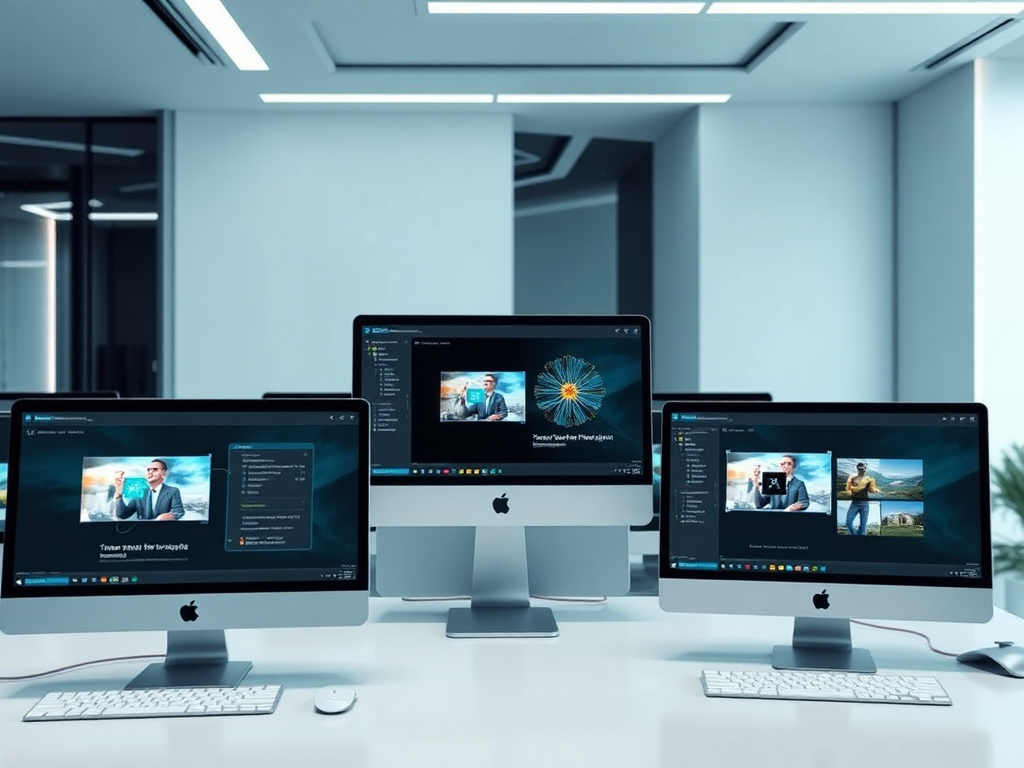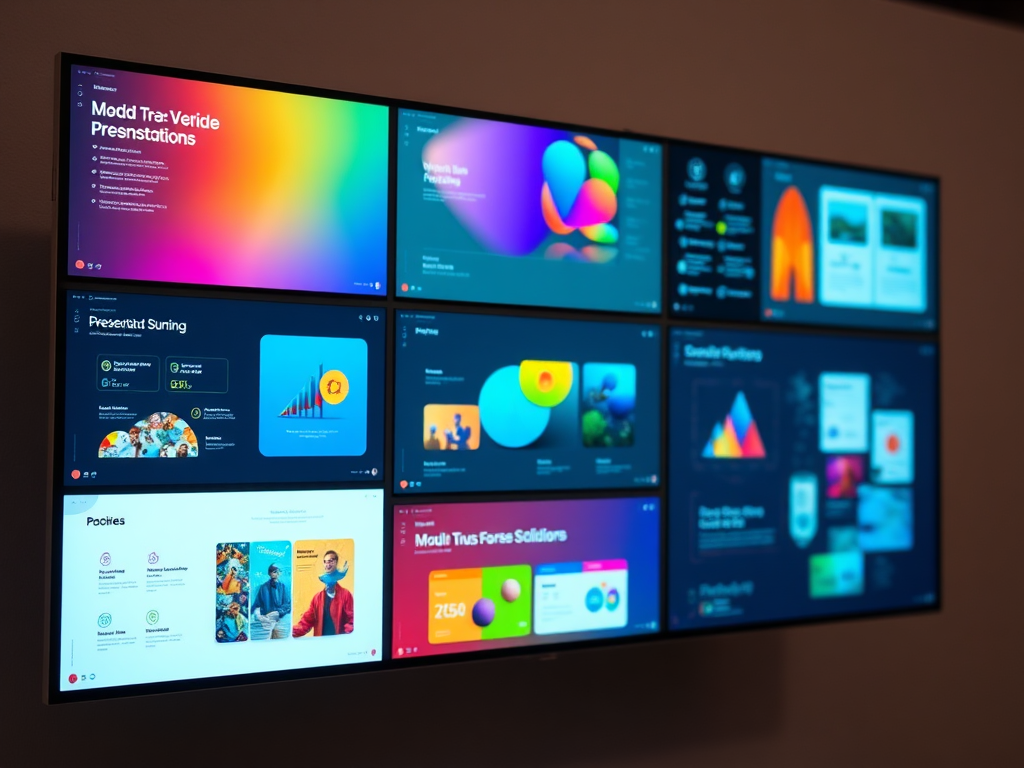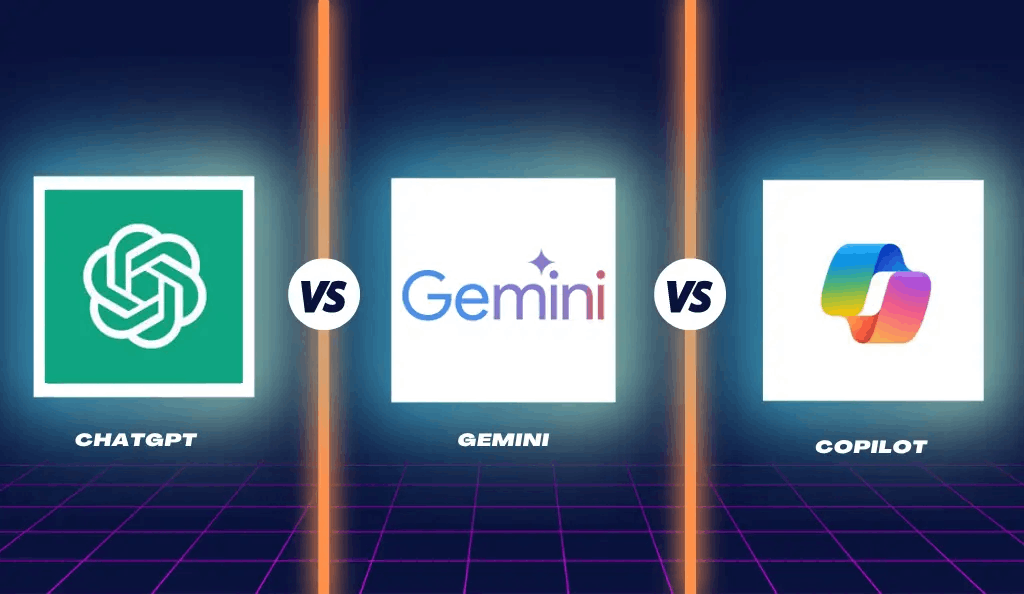In the fast-evolving world of digital presentations, AI tools for presentation creation have become invaluable assets for educators, marketers, and professionals alike. These intelligent solutions simplify the complex process of designing captivating slides, generating content, and incorporating visuals seamlessly. Whether you’re crafting a quick business pitch or an educational lecture, leveraging AI significantly accelerates your workflow while enhancing presentation quality. This article explores over ten neural network-powered tools that automate various aspects of presentation design, from generating text and images to perfecting layouts and transitions. Prepare to discover how AI content generation and automated presentation software can transform your presentation design process.
Introduction to AI Tools for Presentation Creation
Artificial intelligence has significantly transformed how we create presentations. AI tools for presentation creation utilize advanced machine learning algorithms and neural networks to automate the design and content generation process. These presentation design tools help users craft professional slideshows quicker than ever before.
Such AI presentation tools relieve the manual workload associated with formatting and layout decisions while providing smart design suggestions. They also enable automated presentations by generating text, images, and even entire slide decks tailored to user input. This capability speeds up production, reduces errors, and supports multilingual presentations, making them valuable assets in various professional contexts.
Businesses and educators increasingly rely on these tools to efficiently communicate complex ideas with polished visual storytelling. For example, a marketing team can generate an engaging pitch deck in minutes rather than days. As AI content generation continues to evolve, these tools promise to redefine presentation design standards and workflows.
What Are AI Tools for Presentations?
AI tools for presentations use machine learning and neural networks to automate and enhance the creation of slideshows and visual storytelling.
Benefits of Using AI in Presentation Design
These tools reduce manual workload, offer design suggestions, generate content, and speed up production.
- Increased efficiency in slide creation: AI streamlines slide formatting and layout, saving considerable time.
- Automated content generation: Generates relevant text and images based on input topics.
- Enhanced visual design: Provides professionally designed templates and graphic suggestions.
- Multilingual support: Enables presentations in various languages, broadening reach.
- Integration with other software: Seamlessly connects with productivity suites for workflow enhancement.

Top AI Presentation Tools for 2025
The landscape of AI presentation tools is evolving rapidly, offering diverse solutions for automated presentations. These tools leverage neural networks and AI content generation to streamline slide creation and enhance visual storytelling. Listed below are some top AI tools estimated to lead in 2025, each bringing unique strengths to simplify presentation design and content creation.
Fabula AI
Fabula AI is an all-in-one platform providing AI-powered text and image generation. Notably supporting Russian language with ChatGPT integration (currently GPT-3.5, with GPT-4 on the horizon), it enables users to create structured text for presentations effortlessly. Additionally, its image editing features, such as automatic background removal, allow users to prepare visually appealing slides quickly. For example, marketers benefit from swiftly generating tailored visuals and concise slide content, saving hours in preparation.
PresentSimple
PresentSimple is a Russian AI tool designed to generate multilingual presentations. Users can upload supporting materials, which the AI uses to build relevant slides with coherent narratives. Its variety of templates caters to different presentation styles. For instance, educators use PresentSimple to create engaging, language-adapted lectures efficiently, facilitating better audience understanding across language barriers.
Sokratic
Sokratic excels at rapid presentation creation through predefined templates. It accepts text and Excel plan uploads, thereby automating content organization. This tool is valued in corporate environments for producing well-structured reports and proposals within a minute, enhancing productivity without sacrificing quality.
ChatBA
ChatBA specializes in generating presentation text and finding matching thematic images from open sources, although it does not create images itself. This approach helps users avoid copyright issues while enriching presentations. Given its free availability, it is a practical choice for users needing quick content and image pairing without extra costs.
The following table provides a clear comparison of these tools’ key features and pricing models, aiding users in selecting the best-fit AI presentation tool for their needs.
The diversity among these platforms illustrates how AI tools for presentation creation can meet varied professional demands—whether prioritizing image generation, multilingual support, or speed. As neural networks advance, expect these tools to become even more sophisticated, shaping the future of automated presentations.
Fabula AI’s integration of text and image AI with photo editing sets a high bar. Meanwhile, PresentSimple’s language versatility and Sokratic’s speed highlight different user priorities. ChatBA’s zero-cost model offers accessibility, balancing the market.
| Tool | Key Features | Pricing |
|---|---|---|
| Fabula AI | Text & image generation, background removal | Free 10 generations/day, paid plans from $1 |
| PresentSimple | Multi-language AI presentations, templates | Free for 1-2 presentations, paid from $1.5 each |
| Sokratic | Template-driven quick presentations | From $1.3 per presentation |
| ChatBA | Text and image match finder | Free |
AI-Enhanced Design Assistance for Slide Creation
AI-powered presentation design tools are transforming how slides are created. These tools use automated design to help users, including non-designers, craft visually appealing presentations effortlessly. For instance, Slidebean allows users to upload text and images, then leverages AI to suggest optimal layouts and design elements. If the proposed design isn’t satisfactory, users can easily generate alternate options, ensuring flexibility.
Similarly, Microsoft Designer offers an intuitive experience by creating slide designs directly from textual descriptions. By simply describing the slide’s theme, the AI recommends fitting color schemes, font pairings, and layouts. This approach significantly enhances not only the visual appeal but also the readability of presentations.
These AI presentation software tools democratize design, making professional-quality slides accessible to everyone. They reduce dependency on graphic design skills while maintaining high standards of aesthetics. Industry experts note that such design automation accelerates the creation process, fostering better engagement during presentations. Pro Tip: Experimenting with various AI-generated layouts can inspire creative directions you might not consider otherwise.
Slidebean
Slidebean focuses on slide design by assisting users who provide content such as text and images. Its AI engine automatically arranges these elements into polished slide layouts, streamlining the design phase. Users can iterate designs quickly by selecting “Auto Design” or opting for alternative styles with one click. This tool is ideal for those looking to create presentations with AI without deep design knowledge.
Microsoft Designer
Microsoft Designer stands out by generating slide designs based on simple textual input from the user. It suggests coordinated color schemes, font pairings, and layouts that fit the presentation’s theme. Moreover, it integrates with AI image generators like DALL-E to produce custom visuals. This synergy of AI elements elevates the overall slide quality, reducing manual effort and increasing productivity.
Generative AI for Text and Visual Content in Presentations
Generative AI has transformed presentation software by automating text and image creation, streamlining the development of engaging slides. Various AI tools now cater to professionals seeking rapid, high-quality content generation. For example, Tome supports both text and image generation with flexible subscription plans, enabling users to tailor their experience based on needs. Presentations AI stands out by integrating sophisticated effects and transitions, making it suitable for educational and corporate environments. This tool specializes in creating dynamic, visually appealing presentations that captivate audiences. Furthermore, Gamma excels with multi-language support, including Russian, and offers full presentation creation — covering text, design, and images — which is especially valuable in non-English speaking markets. Lastly, Weepik is notable for its speed and compatibility with Cyrillic text, allowing quick generation of presentations with Russian language support. These tools highlight the growing trend of AI-enhanced presentation software, which accelerates production while maintaining creative control. As a result, users can focus on content strategy and delivery without getting bogged down by formatting and design challenges.
Below is a comparative table summarizing the features and costs of these leading AI presentation tools.
Tome
Generates both text and images for presentations with flexible subscription plans.
Presentations AI
Creates presentations with effects and transitions, ideal for various professional fields.
Gamma
Supports Russian language, generates complete presentations including text, design, and images.
Weepik
Offers a quick presentation generator supporting Cyrillic and Russian language.
The table provides a straightforward comparison of each tool’s distinct advantages and pricing models, helping users choose the best fit for their requirements.
| Tool | Features | Cost |
|---|---|---|
| Tome | Text & image generation, flexible features | Free limited plan, paid from $10/month |
| Presentations AI | Presentation effects and transitions | Free with limits, paid downloads |
| Gamma | Multi-language support, full presentation creation | Free with limits, paid from €16/month |
| Weepik | Fast generation with Russian language support | Free |
How to Use ChatGPT and Plugins for Presentation Creation
ChatGPT, powered by advanced neural networks, offers a powerful way to create presentations with AI. One practical method involves integrating ChatGPT with plugins like Smart Slides, which enables users to generate structured presentation drafts quickly from simple text prompts. For example, you can instruct ChatGPT to organize key points into slide headings and concise content sections, making it ideal for initial content generation.
ChatGPT with Smart Slides
By using the Smart Slides plugin in ChatGPT’s paid version, users can streamline the presentation drafting process. Initially, you provide the chatbot with text to adjust into slide-friendly content, specifying requirements such as summary length or tone. Smart Slides then formats the output into a draft presentation file for download. Alongside text, you can generate image prompts for AI image tools, enhancing each slide visually. This combination facilitates creating presentations that are both coherent and purposeful without starting from scratch.
Advantages and Limitations
While ChatGPT excels in generating outlines and explanatory text efficiently, it lacks direct control over the final slide design and visuals. The generated content often requires manual refinement for style and accuracy. Visual elements, such as images or charts, need to be created or sourced through separate AI or editing software. Thus, integrating ChatGPT with specialized plugins and external slide software is crucial to produce polished presentations. Overall, this approach highlights the practical potential—and current boundaries—of AI tools for presentation creation.

Comparative Overview of AI Presentation Tools
Choosing the right AI presentation tools can significantly impact the efficiency and quality of your presentations. The table below summarizes key strengths and ideal use cases for popular AI tools in presentation design. This overview helps users navigate features and cost considerations, ensuring they select software that fits their specific needs.
Fabula AI excels in versatile AI generation, integrating both text and images, making it perfect for users needing a combined content creation solution. PresentSimple supports multiple languages and templates, catering especially well to Russian speakers and multilingual projects. Slidebean offers automated design assistance, ideal for those without design experience who want polished slides quickly.
Tome provides comprehensive AI capabilities with rich text and visual generation, suited for users wanting extensive automation. Microsoft Designer focuses on quick design creation from simple descriptions, appealing to users seeking fast, AI-driven slide generation. These varied strengths illustrate the growing specialization of AI tools for presentation creation, each tailored to different workflows and user requirements.
| Tool | Strengths | Best For |
|---|---|---|
| Fabula AI | Versatile AI generation of text and images | Users needing integrated text and image generation |
| PresentSimple | Multi-language and template support | Russian speakers and multilingual presentations |
| Slidebean | Design automation and layout assistance | Non-designers seeking polished slides |
| Tome | Rich features with text and visual generation | Comprehensive AI generation needs |
| Microsoft Designer | Easy design from descriptions | Users looking for fast, AI-driven design |
Industry Insight: Many professionals combine these tools depending on project phases, for example, using Fabula AI for content creation and Slidebean for final design polish. This blend leverages strengths across platforms, optimizing workflow and presentation quality.
Practical Tips for Selecting AI Presentation Software
Choosing the right AI tools for presentation creation involves several key considerations. First, define your primary needs—whether you require text generation, design automation, or image creation—as this shapes your selection. For example, Fabula AI offers integrated text and image generation, ideal for users seeking all-in-one solutions.
Additionally, consider language support essential for your audience to ensure clear communication, especially with multilingual presentations. Testing free versions helps evaluate usability and local language compatibility before committing financially.
Pricing models must align with scalability; some providers, like presentsimple.ai, offer affordable per-presentation costs beneficial for growing teams. Lastly, verify integration capabilities with other tools you use to streamline workflows and maximize efficiency in presentation design tools and AI content generation.
Future Trends in AI Tools for Presentation Creation
The future of AI tools for presentation creation points towards deeper integration of diverse functionalities. More platforms will seamlessly merge AI content generation, visual design, and multimedia elements, streamlining the workflow for users. This holistic approach will simplify the creation of automated presentations by leveraging advanced neural networks that understand both textual and graphical context.
Increasing AI Integration
Upcoming presentation design tools will integrate text generation, image creation, and video components within a single interface. For example, services combining Stable Diffusion-based imagery with GPT-driven text generation will offer rich, cohesive presentations swiftly.
Enhanced Personalization
Future AI tools will tailor presentations dynamically to audience preferences and situational context. Real-time AI feedback on presentation effectiveness will allow speakers to adjust content on the fly. Additionally, AI-powered speech and presentation coaching will improve delivery, while cloud-based solutions will ensure cross-platform accessibility. These developments promise more engaging and effective automated presentations that suit individual needs.
Summary and Next Steps for Using AI in Presentation Development
Harnessing AI tools for presentation creation can dramatically enhance efficiency and quality. From generating text to designing slides automatically, these neural network-powered services adapt to various languages and user needs. For instance, exploring the free versions of tools like Fabula AI and Microsoft Designer offers a practical starting point. Combining AI-generated elements with personal editing remains essential, ensuring presentations are both polished and customized. Staying informed about emerging AI presentation tools will enable you to leverage new features and maintain a competitive edge in creating impactful presentations.
- Experiment with multiple AI tools to find your fit, as each offers unique strengths for different presentation styles.
- Combine AI-generated content with personal edits to maintain authenticity and clarity.
- Stay updated on emerging AI presentation technologies to incorporate the latest advancements.




